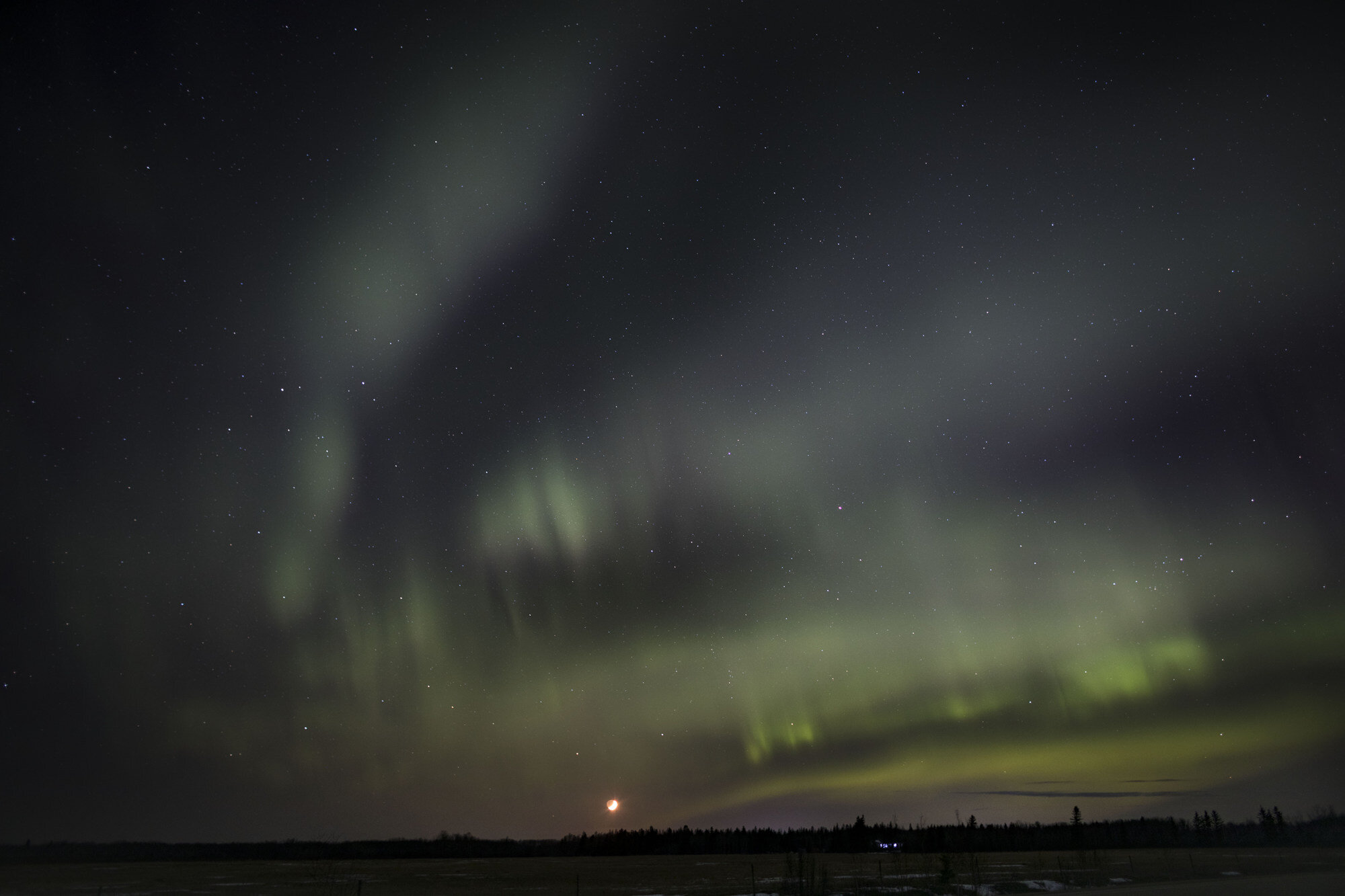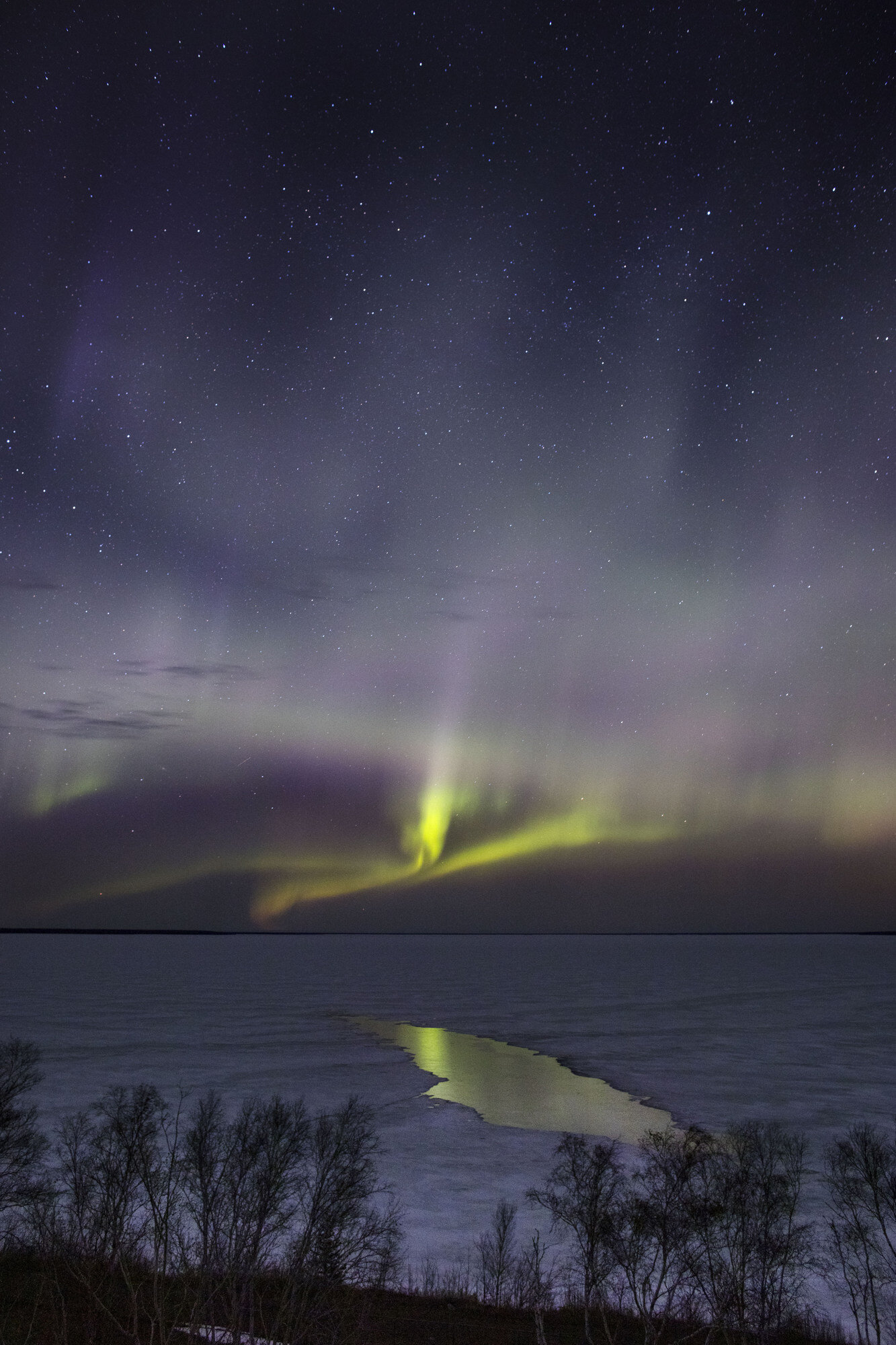This year has seen a lot of opportunities to look up and find a picture, or just a sense of wonder (usually both, for me). Whether it’s been the Aurora Borealis or meteor showers or spectacular sundogs there are so many opportunities in 2021, and I’ve probably photographed the sky more in the past 6 months than I have in the past 6 years.
Part of that is from the pandemic erasing many of the people-centred photography I was doing previously. A lot of it is freeing up more time to be able to wander and wonder and focus on the natural environment.
I’ve seen a lot of Milky Way photographs this year, and it fired up the desire to do it again myself. The one and only time I’d photographed our galaxy was a few years ago during an epic night at a dark sky preserve, in Cape St. Mary bird sanctuary in Newfoundland. This weekend, a night with a new moon (preventing any light pollution from obscuring faint stars), a clear cloudless night and no work commitments the next day meant the time was right to try again!
A quick online search for dark sky areas in Manitoba turned up Spruce Woods Provincial Park. I knew of this park for its near-desert conditions and sand dunes, but wasn’t aware of its status among sky-watchers. Despite the 2-hour drive (each way) all doubts were erased the second I got out of my car and looked up. The star-scape was absolutely breath-taking! There really is no substitute for a complete lack of light pollution — the best camera, lenses or software won’t make up for the night sky being obscured.
This really is the most vital step — finding as dark a sky as possible. This can be as simple as a quick Google search, but don’t think that a quick half-hour drive away from a city will do it — if you’re photographing infinity a few kilometres won’t change a thing. Prep yourself for a few hours drive, and keep in mind that light pollution can also come from the sun. Depending on the time of the year, ‘true’ night won’t come until well after sundown and well before sunrise. (Right about now, true night comes after midnight until about 3 a.m., with the pictures you see here being taken from 1-2 a.m.)
A wide angle lens to cover a great expanse of sky is a must, but equally important is how much light it can gather. An aperture of f/1.4 or f/2 is ideal and help prevent the need to crank up your ISO to noisy extremes.
Don’t forget the flipside to your aperture: your shutter speed. A wider aperture allows a ‘faster’ shutter speed. Anything longer than about 25 seconds will introduce ‘trailing’ to the stars, from the earth’s rotation. So, try keep your time to about 20 seconds maximum.
If you’re curious to try your hand at photographing our galaxy, a little time spent researching ahead of time will save you a lot longer time dealing with potentially serious problems in the field later. Find a dark sky area and prepare yourself for working there in total darkness! Things like bug spray, a flashlight (having a red filter or red light will help you see but not ruin your night vision) and measures to stay safe among wildlife, if applicable (for example, keeping safe among black bear populations is a common issue in Manitoba parks) will go a long way to having a positive experience.
Good luck! Look up in wonder!
The Milky Way rises in the south sky above Marsh Lake, in Manitoba’s Spruce Woods Provincial Park. Adding a foreground element can add visual interest to your composition, and a very valuable sense of perspective.
A horizontal composition - and let’s be honest, a lot of luck in timing - allowed me to include some of the many fireflies blinking in the air around me during this photo session. A long 20-second exposure recorded them as the green wavy lines to the right.
I turned my camera away from the south, where the Milky Way was, towards the east where the earthly elements made a pleasing (to my eye) composition. I liked seeing the vast fields of stars and the different mood this represented. There is almost no enhancement to the colour balance on this and all shots presented here.
This slightly-surreal scene is an example of thinking and acting quickly to the unexpected during a photo shoot. Despite the late hour (2 a.m.) the occasional car drove past on a nearby road, and I noticed that when they did, their headlights lit up a few trees along this marshy lake. When I heard another car approach far off in the distance, I knew this lighting would repeat itself — sure enough, once I set my camera to this view the trees slowly lit up with a ghostly light and my timing ensured the actual car and headlights hadn’t intruded onto the scene yet. The result was an ambiguous scene with a vague sense of mystery — a picture of a mood or a feeling more than what was actually there.


















